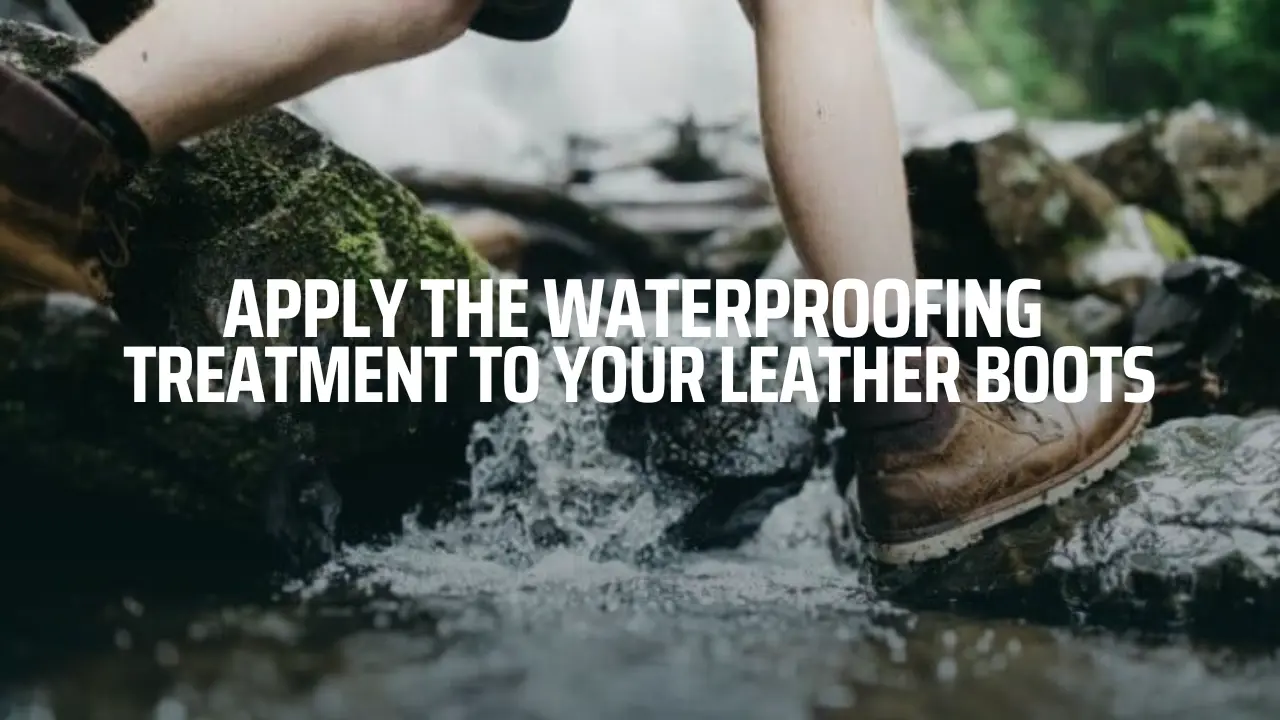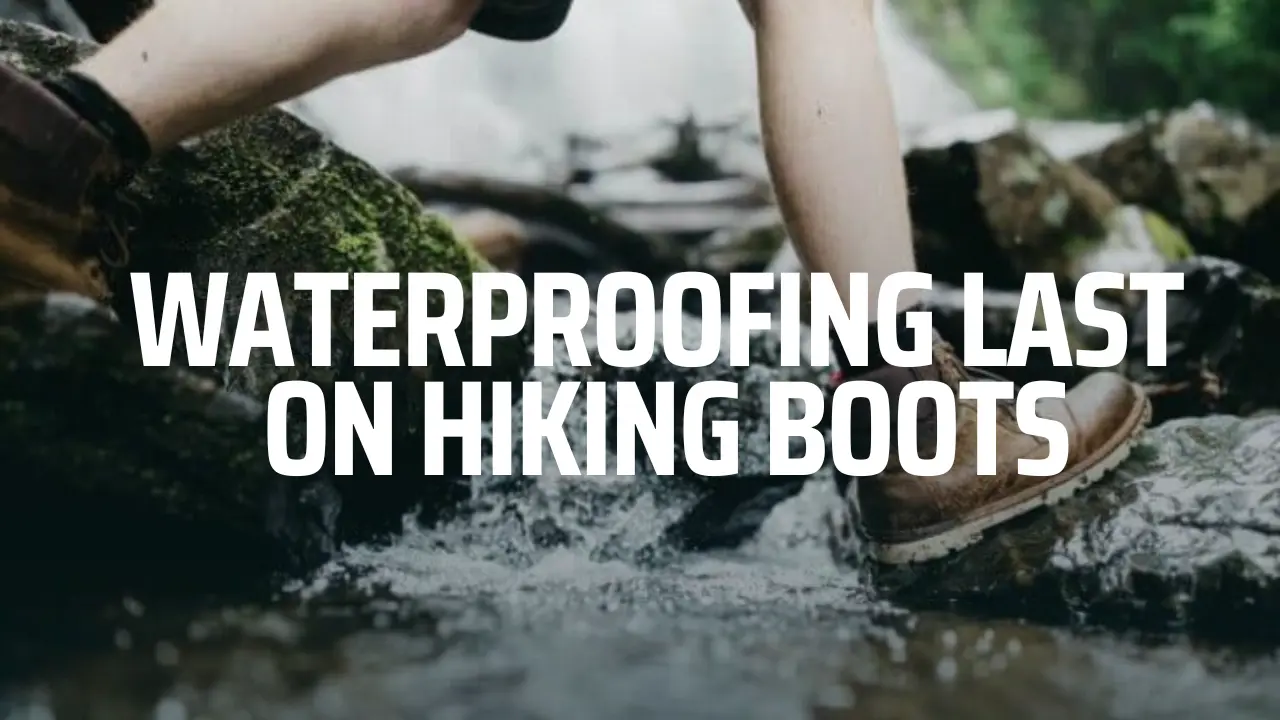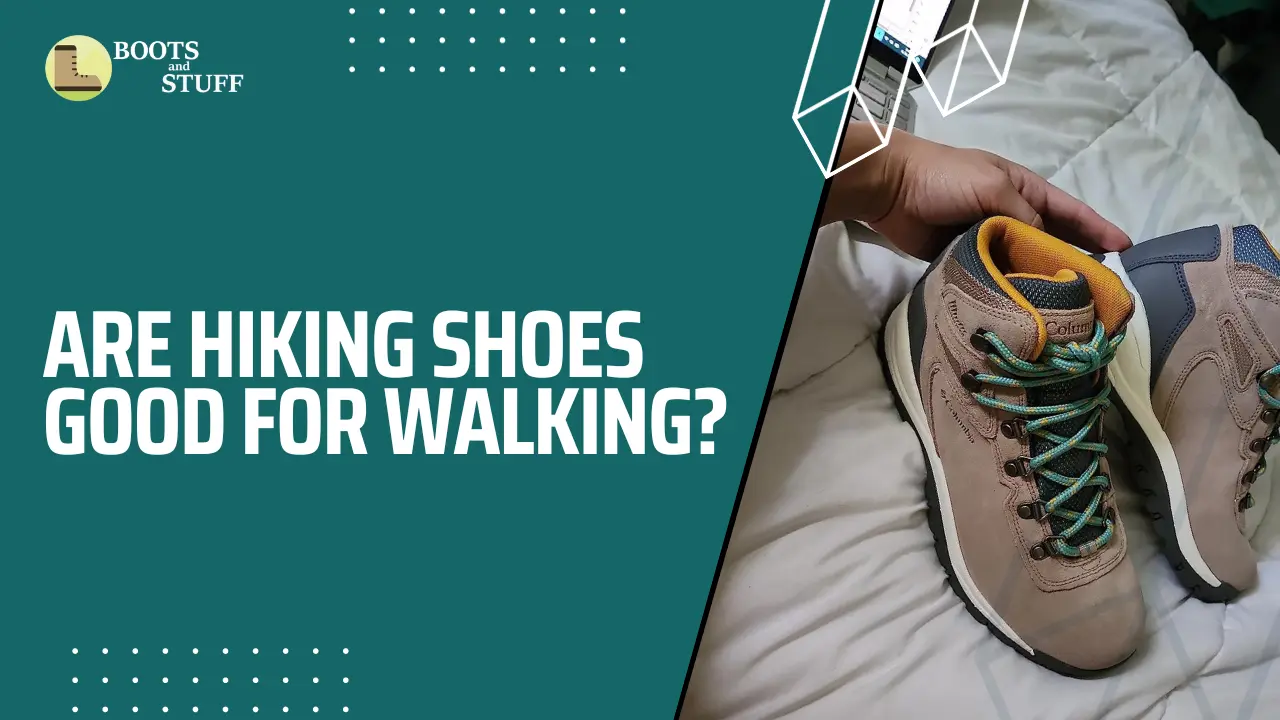Do you want to waterproof your hiking boots? It’s necessary to protect your boots from getting damaged while hiking. Boots are essential things to protect your feet and give you pleasure while walking. You must follow a specific procedure to make your boots waterproof. There are various waterproofing products available on the market. You can buy one and put it on your boots to protect them from moisture.
So let’s go in-depth into how to waterproof your hiking boots easily, and this guide will enable you to use them for years in challenging conditions.
Contents
- How to Waterproof Hiking Boots: A Step by Step Guide
- How Do You Choose a Hiking Boot Waterproofing Treatment?
- How Easy Is It to Waterproof Hiking Boots?
- How to Prepare Your Boots for Waterproofing
- How to Apply The Waterproofing Treatment to Your Leather Boots
- Waterproofing Guide for Different Hiking Boots
- How Long Does Waterproofing Last on Hiking Boots?
- How Often Should Your Waterproof Boots Be Changed?
- Drying and Storage Tips After Application
- Wrap up
How to Waterproof Hiking Boots: A Step by Step Guide
You need to use some essential materials and a proper method before waterproofing your favorite pair of hiking boots. You have to clean your boots first. Below we gave you some tips on cleaning your favorite pair.
Clean Your Boots
It’s essential to clean your boots, especially if there’s debris and dirt in your boots. You can simply wash your boots with water, but some stubborn mud and dirt may remain. So it will be a good idea to use some cleaning materials. You can use a sponge or cloth to clean your boots first. Remember, you do not need to use the treatments every time while washing the boots.
Rinse Your Boots
When you walk in a muddy forest area, your boots get wet. You can see mud and dirt on the boots. So put them under a shower. Let the water take out the soil. Then dry it in the sunlight.
No Radiators for Leather Boots
A well-aired room or sunlight is enough to dry your boots. But never use radiators to speed up the drying process because it may melt the leather.
Scrub Your Boots
Did you walk in a mud area? When you are hiking, mud gets stuck on your boot. Your boots get dirty, especially in hills or walking on grass in monsoon season. That’s why you need a brush. You can clean your boots using a quality brush, and it can be a nail brush or a toothbrush. Take out the laces and boot out of your feet, then start scrubbing the boots with care until they are clean.
How Do You Choose a Hiking Boot Waterproofing Treatment?

There are many types of hiking boot waterproofing treatments. You need to check out your hiking boots to know the necessary treatment.
Most waterproof treatments are for suede (full-grain leather) or nubuck( rough leather) boots. You cannot soak them in water because it will make the boots soft and consume water. So it’s better to use waterproofing treatments. It’s better to read the product description and understand it. Then you can apply the waterproofing treatments correctly.
In addition, it’s better not to use any treatments on Wax-based leather boots. Since it was common to use but not now anymore.
What if you don’t need to use any treatments? Cleaning the fabric area of your boot will be enough. It applies if your boot has the following:
- Gore-Tex® membranes
- Waterproof membranes, or
- Breathable membranes
How Easy Is It to Waterproof Hiking Boots?
The steps to waterproofing your boots are easy. But for everyone, it is not the same. What do you prefer when waterproofing your boots? Do you like convenience or the results? For example, the wax treatment takes a long time to perform. You need to manage your busy schedule.
On the contrary, cream or spray options in treatment work faster. It does not last as long as a wax treatment. But if you have little time, apply the cream or spray it on your boots as a treatment. So it depends on you to make the boot waterproofing easy or hard.
How to Prepare Your Boots for Waterproofing
You will need to prepare your boots to waterproof them. Cleaning is essential before starting the waterproofing process.
That is why you need to follow some steps to ensure preparation:
- Step 1: Remove the laces from your favorite hiking boots.
- Step 2: Get a brush. You can use it to remove dust and dirt gently.
- Step 3: Put the boots under running water or in the shower.
- Step 4: Scrub or rub your shoes with a boot cleaner for better cleaning.
After completing the above steps, you can start waterproofing your boots.
How to Apply The Waterproofing Treatment to Your Leather Boots

Step 1:
First, you have to make sure that water is soaked fully into the thickness of the leather. If the leather is clean, this is the perfect time. Running water over your hiking boot is not enough. Generally, it takes a long time to soak water into the leather.
Step 2:
If your leather hiking boots aren’t wet enough after the cleaning process, try to wrap a very wet towel around the boots for a few hours.
Step 3:
It is essential that the water be fully soaked into your boots. Now you can apply the waterproofing treatment. To do that properly, you can follow the manufacturer’s instructions if they are available.
Waterproofing Guide for Different Hiking Boots
There are instructions for different hiking boots to clean them properly. You can use a general method to clean all the hiking boots. But it won’t work effectively. Every kind of hiking boot needs its customized treatment.
Waterproofing Leather Hiking Boots
One of the most common materials is full-grain leather. It cannot protect your boots from heavy rain. As a result, your boot starts to leak. Later, you may experience soggy toes.
Apply the treatments to wet boots. It works effectively while the boot is wet. So there’s no need to let it dry. So buy and use treatments early. It will keep the leather in good condition. You can then use your boots for years.
Waterproofing Nubuck Hiking Boots
The procedure is almost the same for the Nubuck boots. You can not soak the boots. But you also cannot apply the treatment to dry boots. So it’s better to dampen the boots first. Don’t forget to check the instructions carefully before using them.
Waterproofing Fabric Boots
There is almost nothing in synthetic hiking boots to protect them from the water. It needs a membrane and DWR coating to remove water from the surface.
Synthetic boots require extra scrubbing effort to clean them. Then make the boots a bit wet. Check the instructions first for the specific treatment, and then apply it.
How Long Does Waterproofing Last on Hiking Boots?

The waterproofing treatment does not last a lifetime. You will need to do it again. But the question is when? Well, the duration of the waterproof treatment depends on multiple factors. They are:
- The quality
- What are the materials?
- How often do you use your boots?
- What was the condition of the road while you walked wearing the boots?
The treatment gradually wears off as time passes. The more you expose the boots to complex conditions, the more they lack waterproofing material.
If you use boots regularly, the waterproofing properties last a few months to a year. But it varies from person to person. The time frame is not the same for every pair of boots.
Excessive exposure to water or mud causes problems for the waterproofing elements. So, follow the guidelines given by the manufacturer. Caring for and maintaining your boots regularly provides them an extension of life.
Reapply the treatment on time to save your boots from becoming useless. Dry your boots after getting wet, and avoid exposing them to moisture. It will prolong your boot’s waterproofing capabilities.
How Often Should Your Waterproof Boots Be Changed?

The answer depends on several factors. You can set the waterproofing timeframe by analyzing the following factors.
- The quality of the materials
- How often do you use boots,
- How often do boots go for a walk in harsh conditions?
- The type of waterproofing treatment.
Generally, the waterproofing treatment lasts for a few months. But the answers to the above list of facts will give you a better idea.
When you walk in a rainy or muddy area, notice your boots. Water does not bead on the surface of the waterproofing material, which is decreasing. It indicates that you need the reply treatment on the boots. You will feel your feet wet.
You may need to walk through muddy or wet conditions. Your feet remain safe, but the boots lose their waterproofing elements. Then you may need to apply the waterproofing treatment more often.
Taking care of your boots extends the time frame. Clean the dirt, mud, and debris on your boots. Save it from moisture. Then the waterproofing and materials will give you a good service.
They remain stuck on the shoes and save them from damp conditions. Thus your feet will stay safe and warm.
Drying and Storage Tips After Application
After applying the waterproofing treatment, it’s time to make it effective. Some silly mistakes lower the effectiveness of the treatment. As a result, you start noticing the boots getting wet soon. So follow the below tips:
Drying Time
Your boots need enough time to dry. Follow the manufacturer’s guidelines. There you may find the estimated time for the tie to get dried. The time to get dry varies depending on the specific product used. Do not store your boots without drying them. Give it as much time as it requires to dry fully. No rush!
Eliminate Extra Moisture
Use a piece of fresh cloth or a brush to remove the moisture. If you find mud or condensation on your boots, clean them.
Suppose you store your boots with mud or drooping water. It decreases waterproofing effectiveness. It hinders mold growth and gives boots better condition.
Air Dry
After applying the waterproofing properties, place your boots in an air-ventilated room. So it can dry itself without any damage.
Using any heat source may damage your boot. Heaters and radiators are dangerous for the boots. Don’t try to use them to dry up your boots.
You can use a wrinkled newspaper to wrap the boot. It helps to dry quickly.
Avoid Direct Sunlight
Prolonged sunlight is terrible for boots. It fades and destroys the waterproofing elements. So take them out of sunlight and store them in the shade.
Storing Place
Choose a dry and cool space to store your boots. Avoid any moisture or a place close to heaters. Keeping boots with care protects your shoes for a longer time.
Wrap up
Waterproofing your boots will ensure your feet’ health. If you keep your boots moisture free, you can wear them for a long time. It will also keep your feet wet. So when are you going to waterproof your hiking boots?
Read more
Looking for more recommendations to help you get more outside? Check out our more blogs –
– How to Choose a Hiking Boot- Do’s and Don’ts
– How Should Hiking Boots Fit
– How to Wash Hiking Boots in the Washing Machine
– Are Hiking Shoes Good for Everyday Use?- The Truth
– Are Hiking Boots Good for Work?




